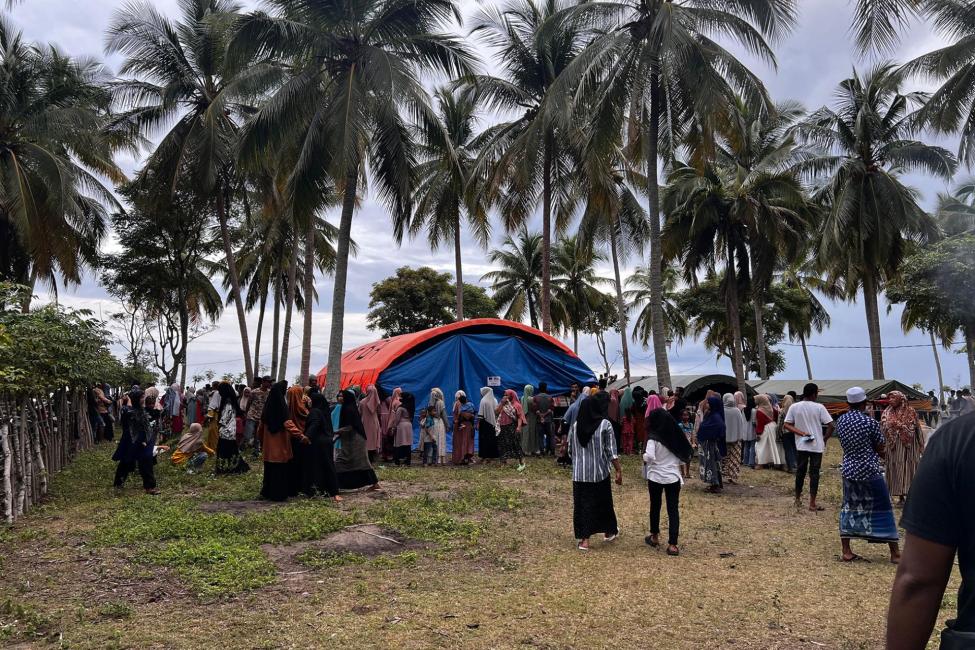-
Who we are
WHO WE AREThe International Organization for Migration (IOM) is part of the United Nations System as the leading inter-governmental organization promoting since 1951 humane and orderly migration for the benefit of all, with 175 member states and a presence in over 100 countries. IOM joined the United Nations system in September 2016.
About
About
IOM Global
IOM Global
-
Our Work
Our WorkAs the leading inter-governmental organization promoting humane and orderly migration, IOM plays a key role to support the achievement of the 2030 Agenda through different areas of intervention that connect both humanitarian assistance and sustainable development.
Cross-cutting (Global)
Cross-cutting (Global)
- Data and Resources
- Take Action
- 2030 Agenda
IOM Releases 2020 Return and Reintegration Key Highlights
Geneva —The International Organization for Migration (IOM) today released key highlights from its Return and Reintegration programmes, including trends, figures and initiatives and efforts to assist and reintegrate migrants returning voluntarily to their countries of origin during the past year.
The border closures and mobility restrictions imposed by governments worldwide in response to the COVID-19 pandemic in 2020 posed unprecedented challenges to IOM’s return and reintegration activities. They resulted in a number of adaptations allowing the Organization to continue providing return and reintegration support to migrants. In 2020, IOM assisted 42,181 migrants to return home voluntarily, including migrants who were stranded or in vulnerable situations – a decrease of 35 per cent from 2019. Among them were 4,038 migrants assisted to return from the humanitarian contexts of Libya and Yemen under IOM’s Voluntary Humanitarian Return (VHR) programme, as well as 1,100 stranded migrants assisted under the COVID-19 Return Task Force.
The European Economic Area remained the main host region in 2020 with 16,649 migrants assisted to return to their countries of origin. Niger was the main host country with a total number of 9,069 migrants assisted to return, reconfirming the trend of increasing numbers of returns taking place from transit countries. Of the roughly 42,000 migrants assisted, 40 per cent returned within the same region in 2020. Migrants assisted to return within West and Central Africa alone accounted for 65 per cent of such flows.
Guided by IOM’s Integrated Approach to Reintegration, which is operationalized in the Reintegration Handbook, country offices worldwide promoted the sustainable reintegration of migrants through reintegration counselling (either pre-departure or upon arrival) as well as economic, social and psychosocial assistance at the individual, community and structural levels. Despite fewer migrants assisted to return in 2020, IOM maintained a high level of reintegration support, with 121 country offices in host or transit countries and in countries of origin providing 106,230 reintegration services.
“This publication demonstrates that despite the challenging circumstances posed by the COVID-19 pandemic in 2020, IOM continued to provide critical assistance to migrants returning to their countries of origin in a safe and dignified manner. IOM also devised innovative ways to assist them and their communities with their sustainable reintegration,” said Yitna Getachew, Head of IOM’s Migrant Protection and Assistance Division.
“With its fresh layout and rich analysis of global trends in voluntary return and reintegration assistance provided by IOM, the report paints a clear picture of the organization’s positive contributions to improving return migration management in full respect for human rights.”
The main host countries of migrants assisted by IOM to voluntarily return to their countries of origin are presented on the map below.

Among those assisted to return voluntarily to their countries of origin, Malians comprised the largest population in 2020 with 3,249 returnees, followed by Guinea (3,145) and Tajikistan (3,106), where a large number of migrant workers returned from being stranded in Kazakhstan.

The 2020 Return and Reintegration Key Highlights report is available in full here. The Executive Summary can be found here.
For more information, please contact IOM HQ: Noëlle Darbellay, Tel: +41 22 717 9562, Email: ndarbellay@iom.int

